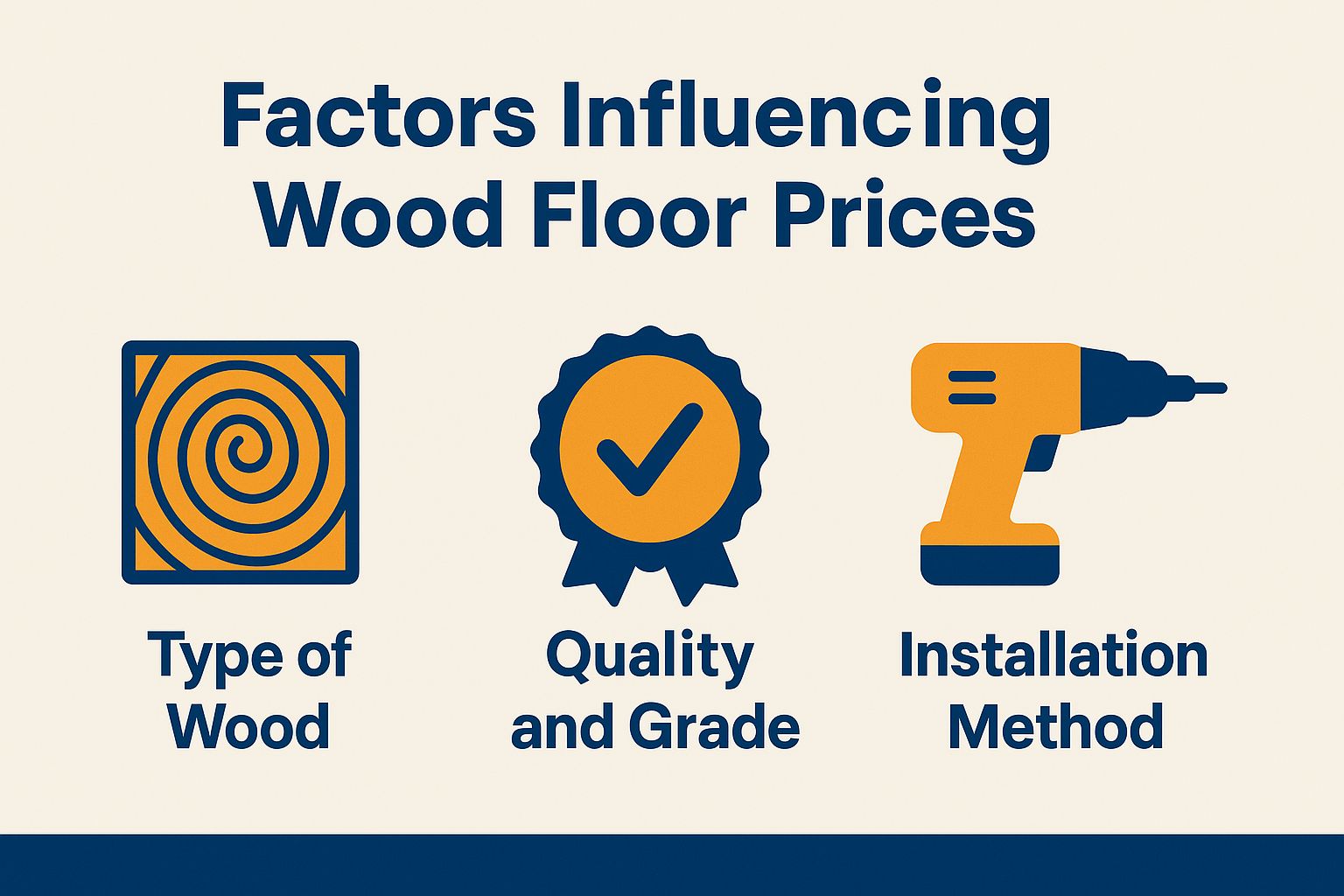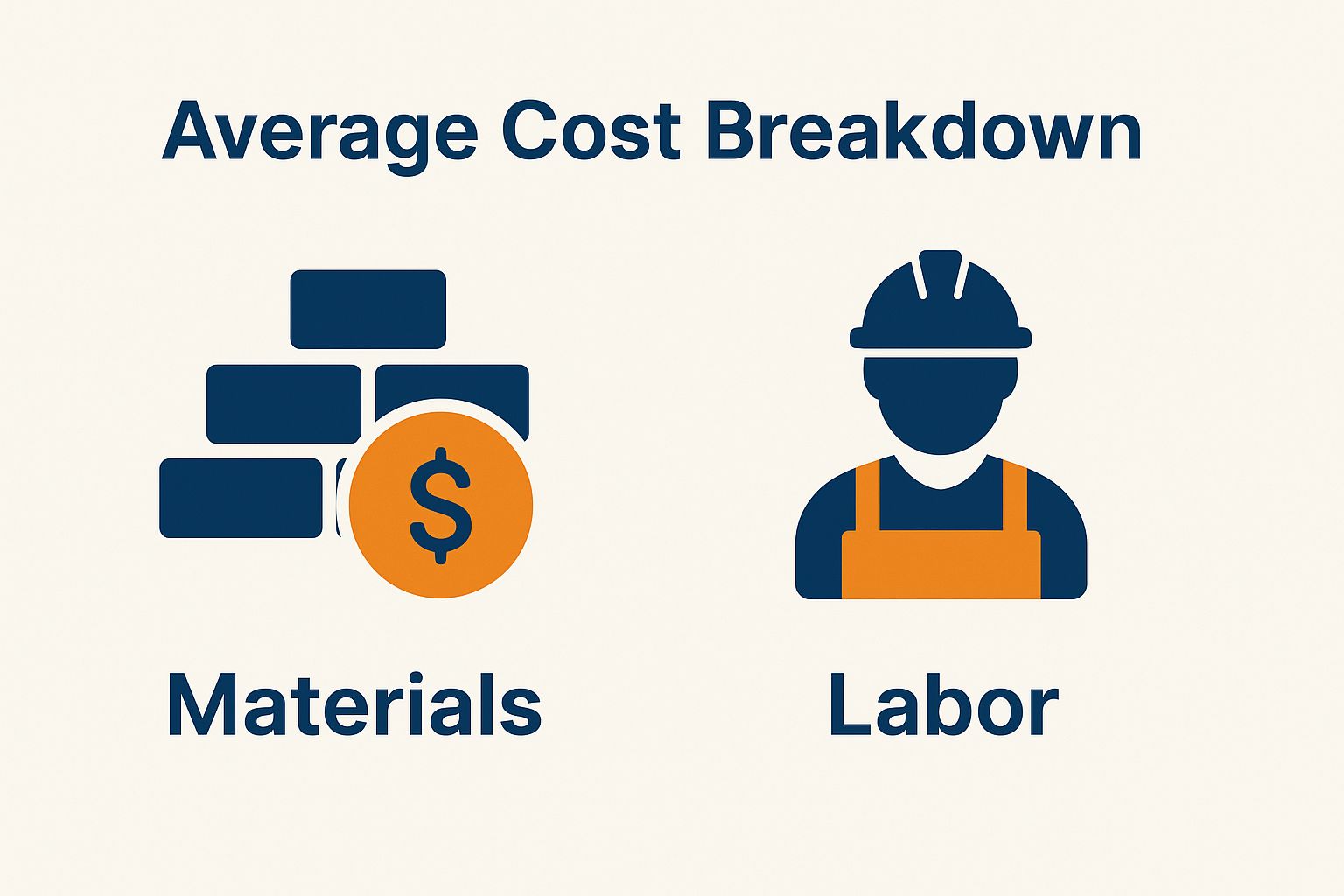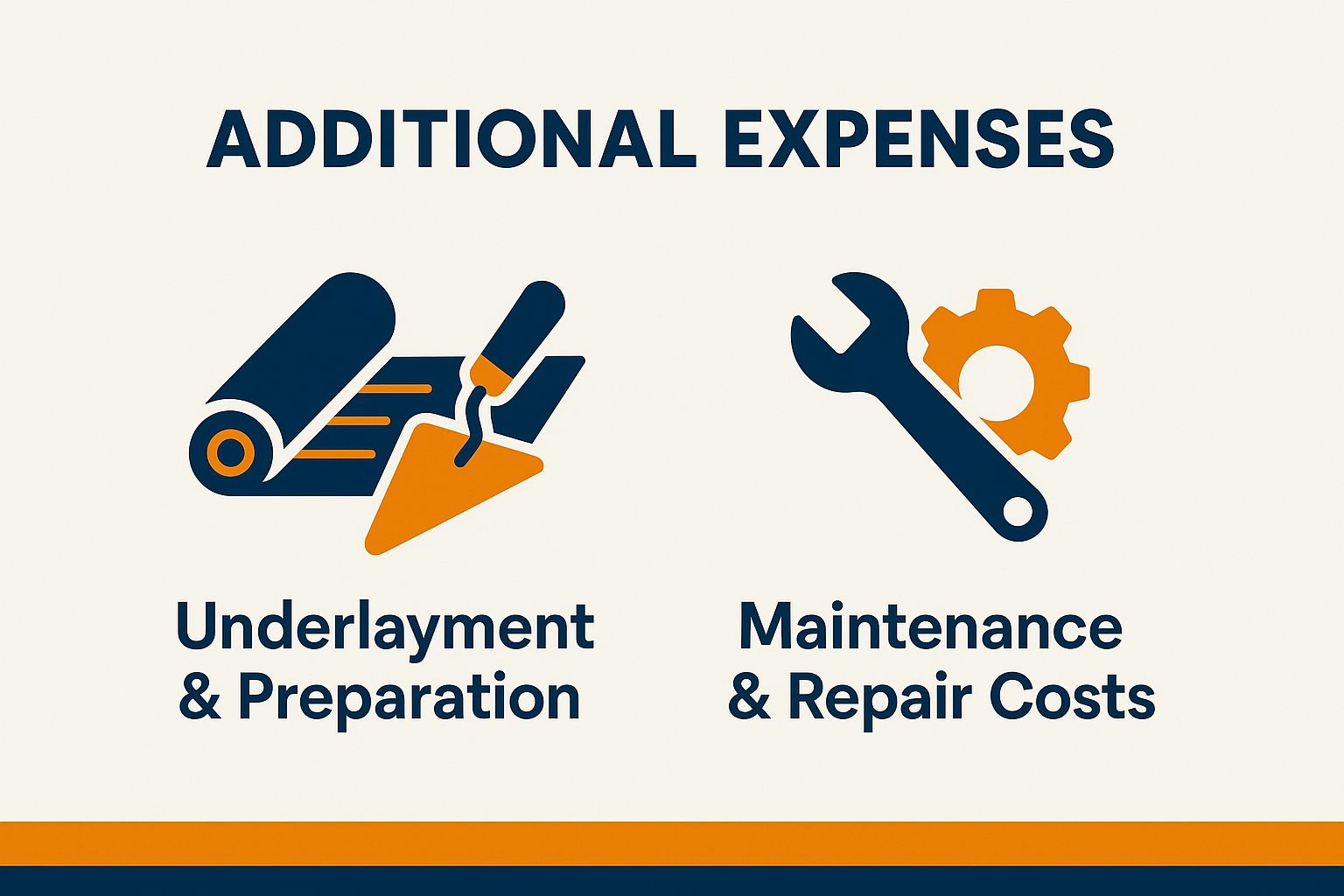
Understanding Wood Flooring Costs
Understanding installation costs is essential when choosing new hardwood flooring. This article will break down what influences hardwood flooring prices, helping you budget effectively and achieve the stunning aesthetic you desire in your home.
Factors Influencing Wood Floor Prices
Numerous factors can substantially influence the cost of hardwood flooring, ranging from the type of wood chosen to the installation methods utilized. When considering wood species like white oak or hickory, each offers unique benefits and price points.

Type of Wood
The selection of wood type significantly influences flooring costs. Solid wood generally ranges from $8 to $15 per square foot, whereas engineered wood can be priced as low as $3 to $10 per square foot.
Consider durability and aesthetics when evaluating solid wood versus engineered wood. Solid wood, such as Brazilian walnut, is known for its exceptional durability and visual appeal; however, it is susceptible to changes in humidity.
On the other hand, engineered wood, exemplified by red oak, provides enhanced stability and is less likely to warp, making it an ideal choice for basements and areas with high moisture levels.
Additionally, solid wood can be refinished multiple times, thereby extending its lifespan, while engineered wood typically permits limited refinishing. Ultimately, the decision should be based on the specific environmental conditions and budgetary constraints of the homeowner.
Wood Quality and Grades
Wood quality and grade greatly affect appearance and durability. Higher-grade woods may incur costs that are up to 30% greater than their lower-grade counterparts.
For example, select grade hardwood is characterized by its near flawlessness, exhibiting a uniform color and minimal knots, making it particularly suitable for visible surfaces. The expected cost for this grade ranges from $6 to $10 per square foot.
In contrast, #1 common grade hardwood may present more imperfections and color variations, making it ideal for less visible installations or those aiming for a rustic aesthetic, with a cost of approximately $3 to $5 per square foot.
Higher-grade hardwoods offer a refined look and better durability. They are a worthwhile investment for long-term projects.
Installation Method
The installation method can add $2 to $8 per square foot to costs, affecting your overall budget.
DIY projects can save significant labor costs, typically $50 to $100 per hour. For a 200-square-foot area, this could lead to potential savings of $400 to $800.
Essential tools required for this process include:
- A circular saw
- A level
- Adhesive
These may total around $200. On the other hand, hiring a professional contractor may ensure a more efficient and refined finish, although this comes at an average labor cost of $2 to $6 per square foot.
To save money, consider a mixed approach: do the simple tasks yourself and hire professionals for the complex ones.
Average Cost Breakdown
A comprehensive analysis of costs provides insight into the allocation of your budget between materials and labor in a hardwood flooring project. If you are specifically considering this for a Denver-based project, you might find additional details on hardwood flooring installation in Denver, CO useful.

Materials
Material costs usually account for 60-70% of your total project expenses, averaging $3 to $15 per square foot based on wood type and quality. For example, oak averages between $4 and $8 per square foot, while walnut ranges from $8 to $15. Maple serves as a mid-range option, priced at approximately $5 to $9 per square foot. Other hardwood types like bamboo, teak, and cherry add variety and cater to different aesthetic preferences.
Buying in bulk, like 1,000 square feet, can lead to discounts of 10-20% from different suppliers.
Smaller projects can save significantly by planning wisely and buying extra materials. This can lower costs to around $2.50 per square foot for bulk orders of oak.
It is advisable to negotiate with local suppliers to get the best deals.
Labor
Labor costs for hardwood flooring installation typically range from $2 to $8 per square foot, influenced by factors such as the complexity of the project and the installer’s level of experience.
Managing labor costs requires considering several factors. Geographical location significantly impacts rates. Urban areas generally have higher costs than rural ones.
Hiring an installer with special skills usually costs more. To identify reliable contractors, it is advisable to seek recommendations from acquaintances or utilize reputable platforms such as Angie’s List or HomeAdvisor.
During the negotiation process, it is important to clearly articulate your expectations and obtain multiple quotes. A well-organized discussion can facilitate a fair rate, potentially resulting in savings of 10-20% on the overall installation expenses.
Other Expenses
Various other expenses can influence your overall investment in hardwood flooring, in addition to material and labor costs.

Underlayment and Preparation
Underlayment and preparation can incur an additional cost of approximately $1 to $3 per square foot for your project, which is essential for ensuring a durable installation.
Inspect the subfloor carefully for moisture and structural problems before preparing it. Utilizing a moisture meter can help identify problematic areas, and if necessary, installing a moisture barrier, such as Roberts 70-193, is advisable at a cost of around $0.50 per square foot.
The choice of underlayment should be based on the type of flooring being installed. For example:
- Foam underlayment is an economical option, costing between $0.25 and $0.75 per square foot.
- Cork underlayment, which provides sound insulation, ranges from $1 to $2 per square foot.
This careful selection process is crucial to ensuring that the flooring remains stable and performs optimally over the years.
Maintenance and Repair Costs
Annual maintenance and repair costs for hardwood flooring range from $0.50 to $3 per square foot, depending on the wood type and finish. Addressing moisture damage promptly can also prevent more costly repairs in the future.
Refine your maintenance strategy to manage these expenses effectively. Regular cleaning with a microfiber mop can help minimize dirt accumulation, which subsequently reduces the necessity for more intensive cleaning efforts.
A high-quality finish like polyurethane can greatly improve the wood’s scratch and damage resistance. Additionally, budgeting for periodic refinishing every 5 to 7 years can help prevent larger repair needs in the future. For residents in Ohio, consider exploring our Cincinnati, OH Hardwood Flooring Installation & Refinishing services to ensure top-notch maintenance techniques.
Using rugs in busy areas can help extend your flooring’s lifespan.
Cost Comparison: Wood vs. Other Flooring Options
When comparing hardwood flooring to alternatives such as laminate or tile, it is important to note that the initial cost is generally higher; however, the long-term value can substantiate the investment.
Hardwood flooring typically ranges from $6 to $12 per square foot, whereas laminate costs between $1 and $3, and tile can vary significantly, ranging from $1 to $20.
Although hardwood presents a higher upfront expense, it can yield a return on investment of 70-80% at resale, compared to laminate’s 50%. Furthermore, hardwood flooring offers durability and aesthetic appeal, which can attract potential buyers and enhance the marketability of a home. Exploring true parquet designs can also increase interest due to its intricate patterning.
In conclusion, while laminate may appear to be a more cost-effective option initially, hardwood flooring often demonstrates greater value over time.
Tips for Budgeting Your Wood Flooring Project
Effective budgeting for a hardwood flooring project can result in substantial cost savings and a satisfactory outcome. It is essential to start by creating a budget that includes all material, labor, and extra costs.
Budgeting tools like Mint and YNAB help track costs effectively. For large projects, consider financing options like home equity loans or HELOCs. Don’t forget to include interest rates in your budget.
Plan for unexpected costs, usually 10-15% of your total budget. This prepares you for issues like subfloor repairs. Careful planning helps you stay within budget and achieve your desired flooring look.
Frequently Asked Questions
How much does a wood floor cost?
Wood floor costs vary based on type, space size, and installation. On average, expect to pay $8 to $25 per square foot.
What is the most affordable type of wood floor?
The cheapest wood floor option is laminate. It mimics real wood but is made from composite materials. It can cost as little as $2 per square foot, making it a popular choice for budget-conscious homeowners.
Is it cheaper to install a wood floor yourself?
Installing wood floors yourself may seem cheaper but could lead to higher costs later. Think about home improvement loans or HELOCs to help with initial costs. Professional installers have the right tools and skills to do the job right, saving you time and money.
What is the average lifespan of a wood floor?
A wood floor’s lifespan varies by wood type, such as Brazilian walnut or cypress, and foot traffic. Generally, expect 20 to 100 years with proper care and maintenance.
Are there any additional cost factors associated with a wood floor installation?
Besides flooring costs, there can be extra expenses. These include subfloor prep, old flooring removal, refinishing, and repairs. Include these costs in your budget when planning a wood floor.
Can I negotiate the price of a wood floor installation?
Some flooring companies may negotiate installation prices. However, choose quality professional installation and a good polyurethane finish for durability and appearance. Choose a reputable company with fair pricing instead of risking quality for a lower price.